QuestionI have started a new community tank. It has been cycling for over 9 days. At this time there are 3 mollies, 7 zebra danios, 2 swordtail mollies and a pleco.Oh, and the new fry that showed up 2 days ago with 14 babies. I have about 3 large sized fern plants as well.
5 days ago I introduced the mollies to the tank. All seemed great but two days ago one of the males started acting up. He would lay on the bottom seemingly breathing just fine then dart up and dash around the tank for about 10 minutes then back to the ground. He did that for a little over an hour and then was just dead.
The other fish are very active but there is a molly and a swordtail that seem to be starting this same show. Not as severe, it's been going on now for about 6 hours. The molly however is the one that just had the babies and who is getting charged relentlessly by the male trying breed.
I suppose what my question is is what could cause the sudden death and what is the appropriate water levels (PH, ammonia, etc.)for this type of tank.
AnswerHi Ryann;
Make a 25% water change right away. They are being poisoned by New Tank Syndrome toxins. Do another one in 24 hours and the same for 2 more days after that. These partial changes will reduce the toxins to a tolerable level without stopping the break-in process. Also stop feeding the fish for 3 days. They will absolutely not starve. Fish can live very healthy for more than a couple of weeks without food. It's just that with toxins in there, any amount of food added will increase them even more. It's the fish waste that produce the toxins so 'fasting' the fish for 3 days will help greatly.
You didn't mention what size tank you have but I suspect it is just too small for that many fish so soon. New tanks can only have one fish for every ten gallons of water in the first 6 to 8 weeks. Here's why;
**********
New Tank Syndrome or Break-in Period
So you have a new tank and you filled it up, put the filter together, mounted the heater into place and turned on the lights. You have all the plants and decorations where you want them....
You are ready for fish.
But, your filter is not ready for a full tank of fish yet.
The filter is running and moving the water and cleaning out crud, right? Of course!
But a very important part of your filter is the part you can't see. An aquarium filter removes the larger visible stuff, but it also must remove the dissolved fish waste that turns into ammonia in the water. To do this, special bacteria must grow in the filter system and on the particles of gravel in the bottom of your tank. This process occurs even on a limited scale in little fish bowls that have no filter in them.
This is "New-Tank Syndrome" or the "Break-in Period". The entire process takes 6 to 8 weeks to complete because these "nitrifying" bacteria grow quite slowly.
Start off with only one or two hardy fish (no more than 2 total inches of fish) for every ten gallons of water and don't add more until the 6 to 8 weeks has gone by. Hard to be patient, but it is worth it to keep your fish alive and healthy. As a matter of fact, the bacteria cannot develop without fish in the tank. You can let that tank sit forever without fish in it, but as soon as the first fish goes in the process begins. Avoid changing the filter pads during break-in. This removes the bacterial colonies that are essential to a balanced aquarium. You can rinse the filter pad out in a container of aquarium water. This will preserve most of the bacteria colonies while still allowing your filter to flow freely. Even using bacteria additives and water conditioners when you first set up the tank will not make a tank begin the cycle by itself. If there are no fish to provide food (fish waste) for the bacteria, the beneficial bacteria cultures will die and you will have to start the colonies all over again once fish are added to the tank. Once the tank has completed the initial cycle, you can change the filter pads every 4 weeks or so. But for now, just rinse them.
Feed your new fish VERY lightly. Any excess food will cause additional waste your system cannot afford to have right now. If you see food floating around or lying on the plants and gravel after five minutes, too much food is going into the tank. Cut back a little each time you feed until it is ALL gone 5 minutes after you feed them. Feed them once a day.
During this "break-in period" your tank will become cloudy and milky looking. You may have to tolerate this for the entire break-in period but it is only temporary. Changing 25% of the water three times a week until the break-in period is over helps a great deal. Changing water reduces the ammonia and nitrites that rise while the bacteria continues to multiply. If ammonia and/or nitrites become too high, your fish will become stressed and possibly die. Use a good water conditioner when you replace the water and make sure it is the right temperature to avoid shocking your fish.
When the break-in is over after 6 to 8 weeks and there are no nitrites or ammonia present in the water you can slowly add more fish. Add one or two every week until you reach the desired population. This allows the bacteria to adjust to the new population every time before adding more. Monitor the nitrites and ammonia to be sure they don't come up. If they do, make a 25% water change and check them again. Don't add the next fish until the levels are down again.
The safe maximum population for any size tank is one inch of adult fish for every gallon of water in the tank. Do some research to be sure of the fish you are interested in. Even though they are small when you buy them, you have to base your population calculations on full-sized adult fish. Many hobbyists have up to two inches per gallon but this can be risky. If a water quality issue arises or a disease occurs it will spread fast and furious in an over-populated tank. In any case, 25% water changes every week to two weeks are absolutely essential for the health of your fish.
Following these guidelines will help you get your new tank on the right track.
**********
At Your Service;
Chris Robbins
Come on over and join us on the freshwater fish forum at About.com to get even more information too;
http://freshaquarium.about.com/od/questionsanswers/a/naavigateforum.htm

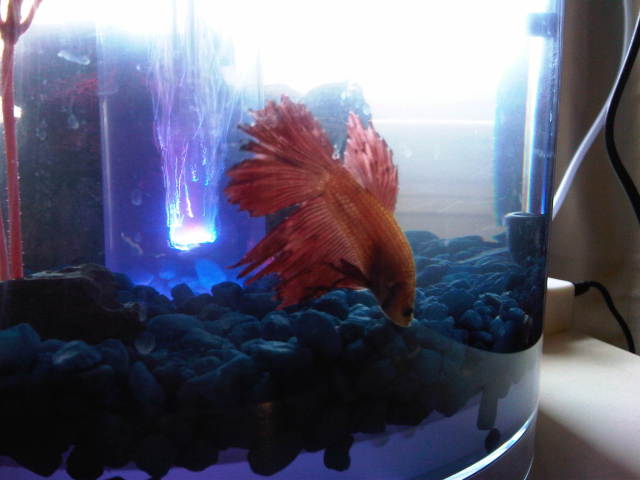 betta - color fading/fringed fins
Question
betta
Let me just start by saying I have recei
betta - color fading/fringed fins
Question
betta
Let me just start by saying I have recei
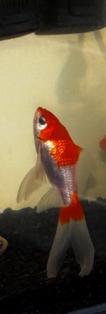 Vertical on the gravel
QuestionImage 2
Image 1
QUESTION: I dont
Vertical on the gravel
QuestionImage 2
Image 1
QUESTION: I dont
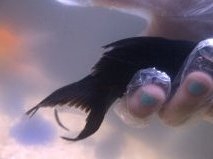 Black Moor with a Tail
Question
Black Moor Black Moor
Hi Jaymie,
Black Moor with a Tail
Question
Black Moor Black Moor
Hi Jaymie,
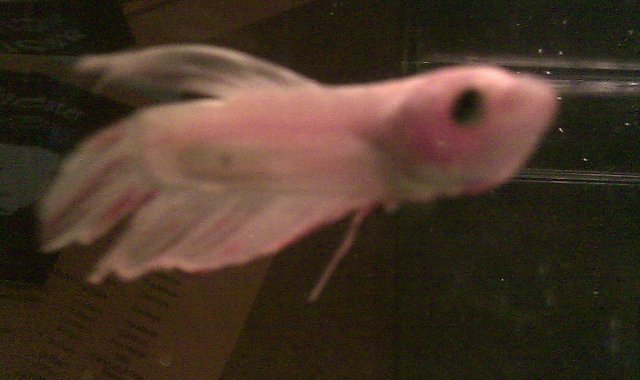 Eye Cloud?
QuestionBenny
QUESTION: Dear Jaymie,
As I have
Eye Cloud?
QuestionBenny
QUESTION: Dear Jaymie,
As I have
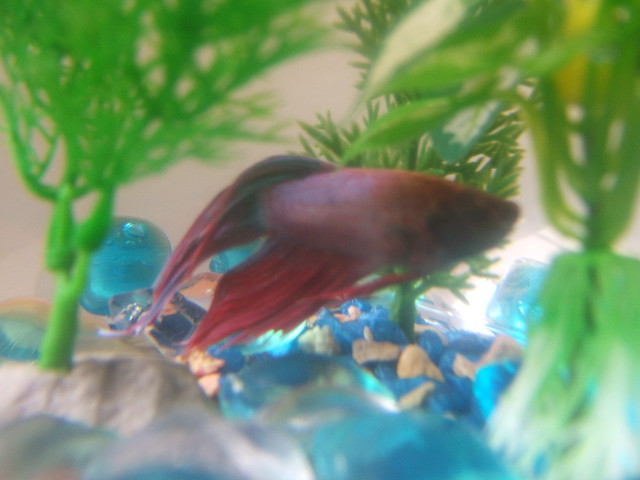 Fish- Bettas Health
QuestionQUESTION: I brought my Betta a few months ago a
Fish- Bettas Health
QuestionQUESTION: I brought my Betta a few months ago a